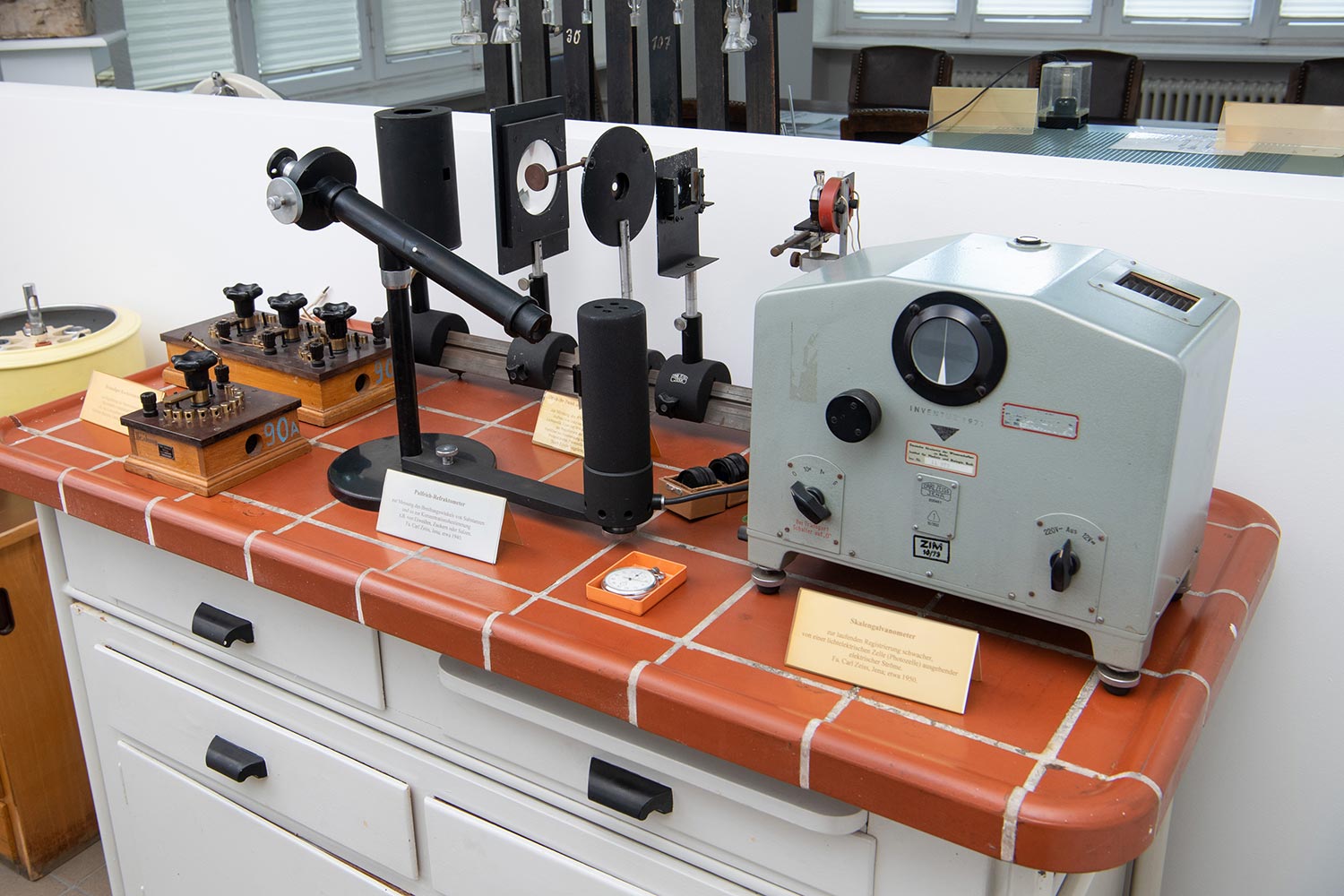5Laboratory table with optical bench
around 1950

This tiled laboratory table with an “optical bench“ dates from the 1950s. Optical benches like these were used by Erwin Negelein and other scientists. Negelein was initially employed as a mechanic at the institute. He went on to study chemistry and worked as a biochemist and cell physiologist in the department of Otto Warburg, who later won the Nobel Prize. Negelein combined knowledge from his two fields to make optical measurements over the course of chemical processes. If a substance is oxidized or reduced during a process, for example, the amount of light of a defined wavelength that it absorbs changes. Thus, the spectrum of the light changes when shined through a sample of the substance. The changes in absorption are measured with this optical bench. The device is therefore called the Erwin Negelein absorption spectrophotometer.
The instrument consists of a three-stage crank resistor (built ca. 1910), which permits regulating the light intensity from the lamp. It also has a resistor-controlled light source, a lens to focus the light beam, and an iris diaphragm to regulate the width of the light beam. Color filters permit masking out unwanted spectral components. There are also a sample cuvette and a photocell connected to a mirror galvanometer, with which the photocurrent is measured.
The Institute for Medicine and Biology was founded on the campus in 1947, with Walter Friedrich as founding director. This later became the Institute for Cell Physiology of the German Academy of Sciences in Berlin, and its founding director was Erwin Negelein. Work at these facilities focused on characterizing and identifying basic biochemical processes and the molecular components involved in the interactions. Newly introduced methods of measurement, such as the optical bench, made this possible. Erwin Negelein used the device exhibited here to examine enzymes involved in the metabolism of carbohydrates and amino acids and other processes.
Negelein made important contributions toward elucidating the structure and function of nicotinamide adenine dinucleotide phosphate (NADP). His former mentor, Otto Warburg, received the Nobel Prize in Physiology or Medicine in 1931 for “discovering the nature and function of the respiratory enzyme”.
You can find out more about the life and work of Erwin Negelein and Otto Warburg in the Science-historical tour.